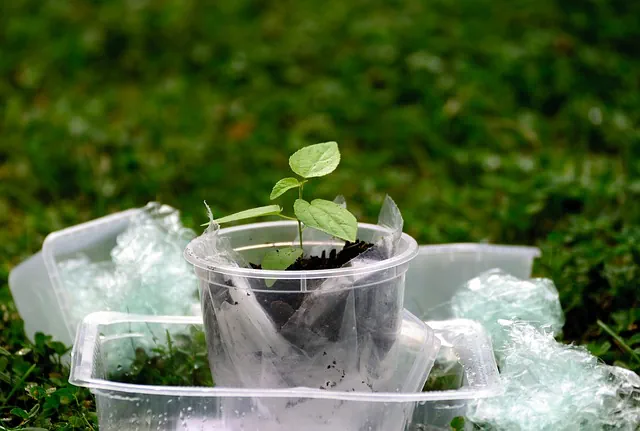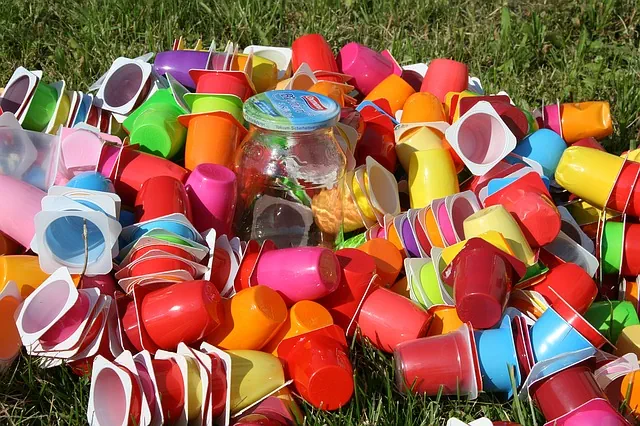
How to Reduce Ecological Footprint at Home?

Table of Contents
Introduction
We currently consume more resources than the Earth can produce. This is unfortunate, and we should learn how to reduce our ecological footprint at home to minimize the potential dangers with greater ease. Ecological footprint refers to the measure of the resources we consume.
Remember that we would need approximately three more Earth-like planets if everyone on the Earth had the same ecological footprint as the average US citizen. Americans consume more than most people from less developed countries partly due to economic reasons. Right now, humans worldwide are absorbing about 157% of the Earth’s natural resources, meaning we need at least one Earth and a half to lead peaceful and healthy lives. As the GDP of other nations like China improves, the situation is likely to worsen.

Using plastic containers to plant trees at home. Pixabay
While the environmental threat is real, it’s solvable, as we have noted. There are incredible actionable steps you can take to reduce your ecological footprint at home. Read on for the best ways to do this with ease.
Reduce Use of Plastics
Most plastics pollute the soil and bodies of water since they are non-biodegradable. They can exist for hundreds of years and hinder plants from growing freely. They can also interfere with the free flow of Oxygen in various bodies of water. Besides, they occupy large spaces in landfills. Burning plastics also directly add poisonous substances like carbon to the atmosphere.

Used plastic cups Pixabay
One of the best ways to reduce the ecological footprint at home is to eliminate single-use plastics. You can do this by using reusable plastics instead of disposable ones. Moreover, instead of using plastic straws, you can drink from a cup or use reusable metal straws.
Consider Renewable Energy
Did you know that your electric company may offer you a discount on your electric bill if you use renewable energy? Some of them do. Nonetheless, as a responsible citizen, you should shift from non-renewables to renewables whether your companies grant these offers or not. Non-renewable energy is a threat to the environment since it remits lots of greenhouse gases. Fossil fuel and its alternatives like oil fall into this category, yet they are some of the most used fuels today. To reduce the negative impact, you can opt for renewable energy like solar panels, geothermal, ocean waves, hydropower, and wind turbines.
Use Less Energy
If you rely on electricity that comes from gas or coal, you should minimize its usage. Most people in different parts of the world heavily rely on this source of energy. That’s why a quarter of greenhouse emissions come from electricity.
Remember, even if your electricity comes from renewable sources, you still need to use it sparingly. They typically generate radioactive wastes that can harm human health. Studies consider the wastes an underlying cause of some types of cancer.
Since economical use of energy reduces the degree of risk, your role should be to use electricity sparingly.
Here are simple but essential steps that you can take to use less electricity at home:
- Replace your incandescent light bulbs with quality and energy-efficient LED bulbs
- Add insulation to your home
- Set your thermostat higher, particularly in the summer. Set it lower in the winter (This can serve you best when nobody is at home)
- Use new technology that keeps your home energy efficient (Some are low-flow water fixtures and glass that reflect light and heat)
- Reduce the use of electronics (Unplug electronics that are not in use, resist new gadgets, and only use electronics when necessary)
- Use hot water less
- Hang clothes on the line when you when them to dry
Reduce Your Food Footprint
Approximately a fifth of the world’s carbon emissions originate from raising animals—cattle burp after feeding and release methane, a harmful greenhouse gas, in the process. The manure of these animals also releases carbon dioxide and nitrous oxide. Also, cattle feed on various types of grass that you can hardly find in forests. This means farmers have to cut down forests for their animals to find a spacious grazing area, thereby reducing carbon sinks.
As a cattle farmer, can you see how to reduce the ecological footprint at home? Eating a meat-based diet leads to an increase in greenhouse gases in the air. If you stop rearing the animals, some of your customers can switch to plant-based diets, which can eventually help to lower the harmful emissions. Please note that when one person forgoes meat and dairy products for a day, the carbon footprint reduces by eight pounds, which translates to 2,920 pounds every year.
Meat-based diet
Drawdown Project provides objective data that supports the need to shift from meat-based diets. According to the project’s technical summary, we can keep 65 gigatons of carbon dioxide out of the atmosphere over approximately 30 years if we ensure at least half of the world’s population adopts a plant-rich diet by 2050. In other words, we could eliminate approximately two years’ carbon emissions from fossil fuels by then if we reduce the consumption of meat and dairy products by half now.

Meat based diet
Reuse, Reduce, and Recycle
If people begin recycling at least half of their household wastes, we can save close to 2,400 pounds of carbon dioxide annually. Most households worldwide throw their wastes into waterbodies and other ecosystems, thereby increasing the carbon footprint.
To reduce the risk, you can double your effort by buying products with minimal packaging. Also, instead of purchasing disposable products, you can opt for reusable ones. For example, you can get a reusable water bottle and use it for as many months or years as possible.
You can also recycle some of your household items to create new, highly efficient products. If you lack the technical skills to recycle some of your items, you can seek the guidance of professionals. In some cases, you may need to use chemicals. You may also require the right skills to achieve this without exposing yourself to any risk.
Use Water Sparingly
Before the industrial era, almost everyone believed that water is a renewable resource. It’s now clear that clean water is scarce, and we need to use it sparingly. One of the ways to do this is to turn off the tap whenever brushing your teeth. Also, when washing your car or shampooing your pets, you should stop the water from flowing until you are done. You can also reduce the use of water by taking shorter showers and installing low-flow showerheads.

Toddler playing with tap water
Use Non-Toxic Household Products
Most household products are petroleum-based, so they are toxic. Others contain lots of other dangerous substances. So, whenever you use them at home or anywhere else, you increase your ecological footprint.
You can eliminate these household products by making the right buying decision. Make it a habit of only spending your money on products that are safe for the environment.
Plant Trees
As you know, trees and other green plants absorb lots of carbon dioxide during the day. They use this gas to manufacture their food through a process known as photosynthesis. At night, these plants release Oxygen, which humans and animals require to survive.
A tree absorbs an average of a ton of carbon dioxide in its lifetime. Now that none of the methods we’ve seen today can perfectly eliminate your carbon footprint, you can rely on the trees you plant at home to help you come closer to achieving the goal.
If you don’t have adequate space to plant trees, you can consider buying artificial trees designed to absorb carbon from the atmosphere.
Purchase Carbon Offsets
Saving the environment in advance is much better than paying afterward to offset your ecological footprint. However, if you can, you should consider purchasing carbon offsets to take care of the carbon emissions you can’t eliminate with ease. Governments and companies purchase carbon offsets to help protect the environment. You can also do the same to reduce your ecological footprint at home.
How to Help the World Reduce Ecological Footprint at Home?
The US population is currently approximately 332 812 597, and the world population is about 7.9 billion. We said at the beginning that living things on this planet currently require more than one Earth to be able to lead peaceful and healthy lives. In other words, everyone’s environmental conservation effort counts. If you already see the negative impact of greenhouse gases, it’s the best time to help others to do the same.
Find ways to increase public awareness about the impact of the increasing ecological footprint and help more people see how and how they can reduce it at home. Consider getting involved in establishing and enacting various programs and policies designed to help improve research on this subject and promote accurate information and knowledge sharing. Share verified information about recycling, energy conservation, and other ways to preserve and protect the environment at home with everyone in the workplace, your friends, and your acquaintances. This way, you’ll help to increase the number of responsible people who support the course. What’s more, you can also help preserve the Earth by voting thoughtfully and informing public officials of the benefits of passing environment-friendly policies and implementing them to the letter.
Hopefully, we’ll successfully reduce our ecological footprints to the required limit with ease within a few years if you use the tips we’ve shared here.